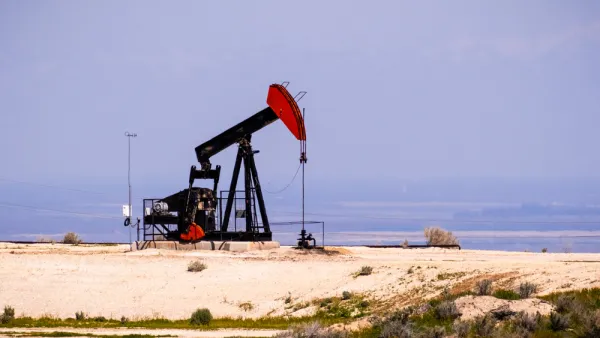Gas prices will drop due to surging U.S. oil production according to an U.S. Energy Dept. report. Another report from the International Energy Agency points to surging carbon dioxide emissions, not from oil but from coal burning, largely from China.
Clifford Krauss and Stanley Reed write about two reports released Dec. 16 that give hard data on energy production in both the U.S. and the world, and what it means for world energy prices and climate change.
In short, growing U.S. oil production is projected to lower world oil prices while growing coal consumption, particularly from China, have caused 60 percent of the increase in global carbon dioxide emissions since 2000, and coal "consumption through 2018 is expected to increase by 2.3 percent a year." Details follow.
The first report is from the U.S. Energy Department's information gathering division, the Energy Information Administration or EIA.
The Annual Energy Outlook 2014 (AEO2014) Early Release Overview (PDF) "predicted that the increase in United States (oil) production [an average of 800,000 barrels a day annually through 2016] would contribute to a decline in the world oil benchmark price over the next few years to $92 a barrel in 2017 from a 2012 average of $112 a barrel, which should translate into lower prices at the pump for consumers."
Krauss and Reed point to the regional "glut of certain higher grades of oil...in the Midwest and Gulf States" that is "stir(ring) a debate in Washington over whether the Obama administration should reverse a policy of banning most exports of oil that goes back to the 1970s", also discussed here on Dec. 17.
Also covering EIA's annual outlook, NPR in a recent broadcast noted that "the United States became the world's biggest producer of oil and natural gas" and discussed how this "transformational event" will affect the development of renewable energy.
The somber report from the Paris-based International Energy Agency indicates that "global consumption of coal, a major source of the greenhouse gases blamed for rising global temperatures and other pollutants, is likely to continue to grow at 'a relentless pace' through 2018."
The agency said that the consumption of coal for electricity generation and heat accounted for more than three-fifths of the rise in global carbon dioxide emissions since 2000. Coal use increased by an average of 3.4 percent per year from 2007 to 2012, faster than the increase in either oil or natural gas. Consumption through 2018 is expected to increase by 2.3 percent a year, the I.E.A. said.
"China will account for nearly 60% of new global (coal) demand over the next five years," states the IEA press release. A major source of China's coal demand will be for "gasification", unlike the U.S. process that uses hydraulic fracturing and horizontal drilling in shale basins. How the production of "synthetic gas" affects carbon emissions was posted here in September.
Coal growth in the U.S., on the other hand, is on the opposite trajectory largely due to the use of fracking in shale basins. While coal burning has grown in the past year, accounting for "40% or more of the nation's electricity...with natural gas fueling about 25% of generation during the same period" according to the E.I.A. May 23 report, the annual outlook projects that natural gas production will see "a 56% increase between 2012 and 2040."
The result: "In 2040, natural gas accounts for 35% of total electricity generation, while coal accounts for 32% (Figure 3 on page 2)." [PDF]
FULL STORY: Surge Seen in U.S. Oil Output, Lowering Gasoline Prices

National Parks Layoffs Will Cause Communities to Lose Billions
Thousands of essential park workers were laid off this week, just before the busy spring break season.

Retro-silient?: America’s First “Eco-burb,” The Woodlands Turns 50
A master-planned community north of Houston offers lessons on green infrastructure and resilient design, but falls short of its founder’s lofty affordability and walkability goals.

Delivering for America Plan Will Downgrade Mail Service in at Least 49.5 Percent of Zip Codes
Republican and Democrat lawmakers criticize the plan for its disproportionate negative impact on rural communities.

Test News Post 1
This is a summary

Test News Headline 46
Test for the image on the front page.

Balancing Bombs and Butterflies: How the National Guard Protects a Rare Species
The National Guard at Fort Indiantown Gap uses GIS technology and land management strategies to balance military training with conservation efforts, ensuring the survival of the rare eastern regal fritillary butterfly.
Urban Design for Planners 1: Software Tools
This six-course series explores essential urban design concepts using open source software and equips planners with the tools they need to participate fully in the urban design process.
Planning for Universal Design
Learn the tools for implementing Universal Design in planning regulations.
EMC Planning Group, Inc.
Planetizen
Planetizen
Mpact (formerly Rail~Volution)
Great Falls Development Authority, Inc.
HUDs Office of Policy Development and Research
NYU Wagner Graduate School of Public Service




























